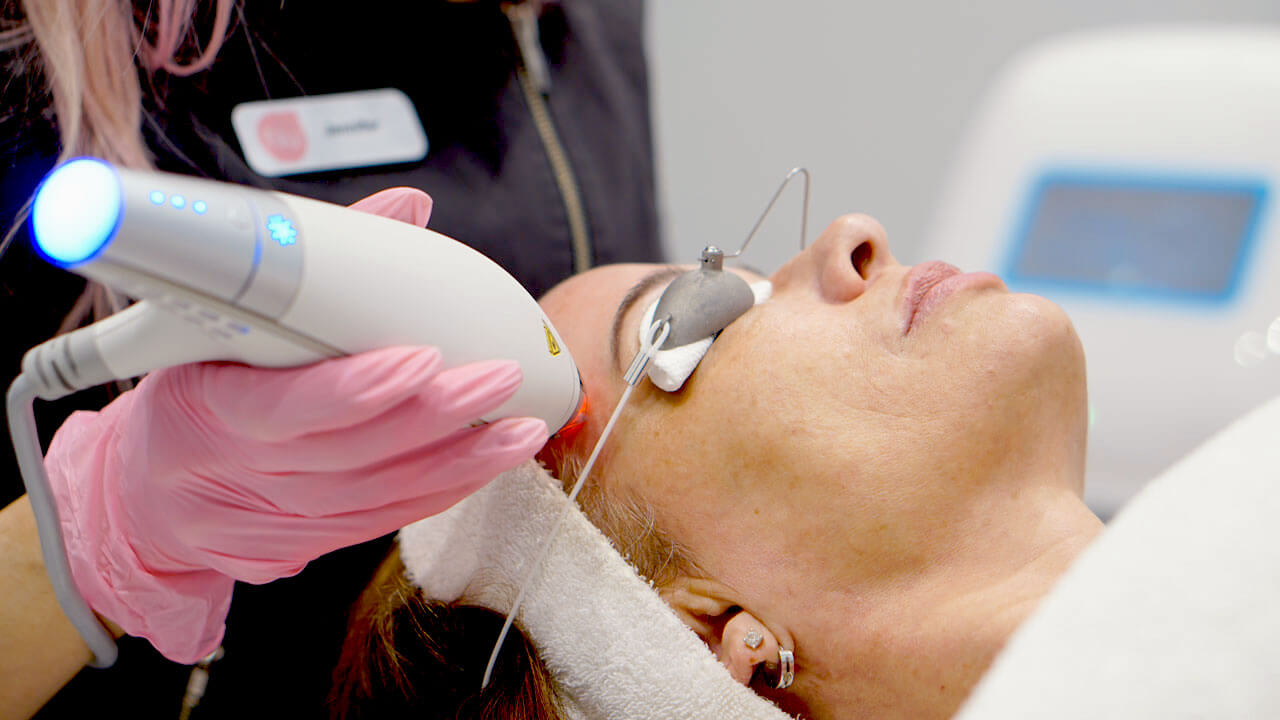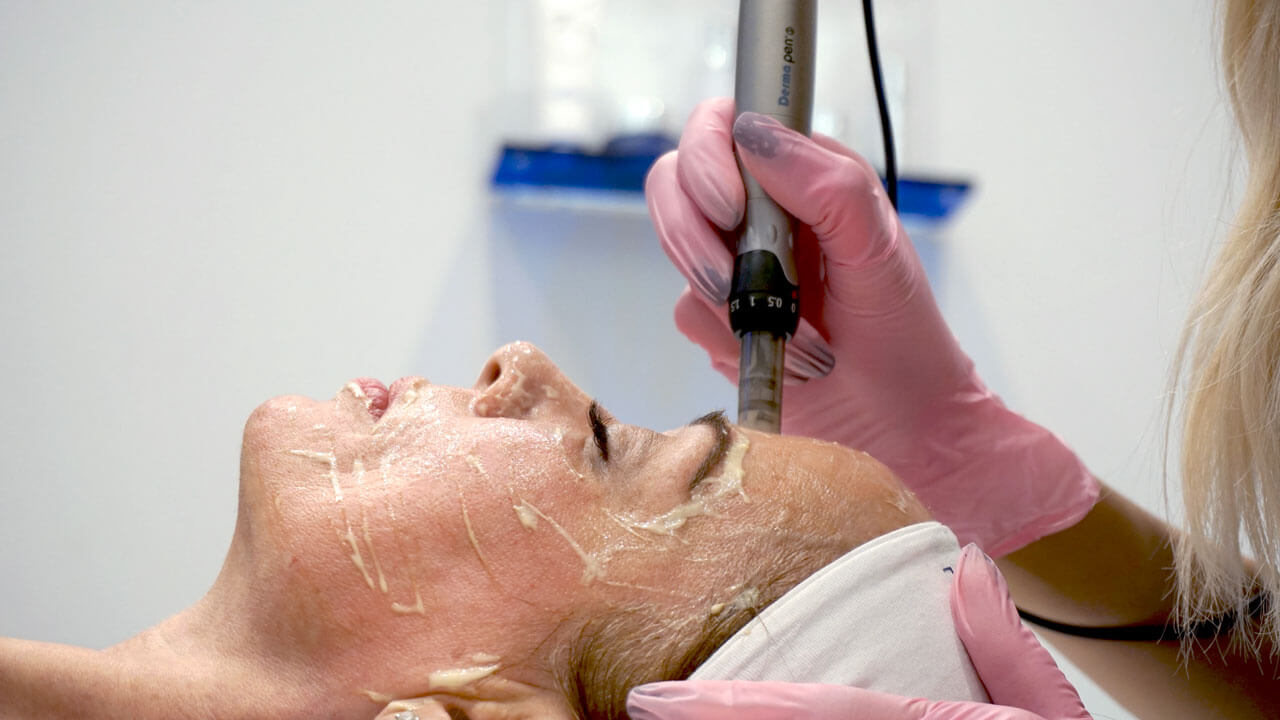Your rosy cheeks may have been adorable when you were five, but not so much anymore. If you’ve been struggling with covering up the redness in your skin, there are more permanent solutions. Most of us might think the redness or irritated, sensitive skin and think it’s rosacea or eczema. While this is sometimes true, more often than not it is actually sensitized skin. The appearance between these conditions can appear quite similarly, however the cause and treatment will vary, but we’re here to help you calm down the redness and irritation for good.
What causes Rosacea?
Just like acne, the cause of rosacea could be 101 things or a unique combination of many or a few. Rosacea is most common in fair skin types and is thought to affect somewhere around 1 in 20 people, although it’s frequently misdiagnosed or simply just missed altogether, meaning that number could very well be much higher. For years, experts and health professionals have debated the cause and best treatment options. Given the different severities and combination of symptoms, it can be tricky to find a single solution for everyone.
Generally speaking, rosacea is caused by one of two things: extrinsic (external) or intrinsic (internal) factors. The first external factor being a weakened or too-thin of a barrier or acid mantle on the skin’s surface. Our acid mantle, sometimes referred to as the hydro-lipid film, is a film on the surface of our skin that acts as the interface between your skin and the world. Much like the name implies, our acid mantle is what makes our skin slightly acidic in pH. This is important as it contributes to our adaptive immune system and helps to protect us from bacteria and harmful molecules in our environment.
As we go through life, not protecting our skin from sun exposure can break down this barrier year by year. Using products that are full of alcohol or stripping ingredients can also contribute to the breaking down of this vital function. Since one of the jobs of your acid mantle is to keep the bad out and the good in, if it’s compromised for any reason, you’ll end up with inflammation because there’s nothing maintaining the balance. Internal factors could include genetics, gut health, and overall lifestyle and diet factors.
Types of Rosacea
Rosacea is a common skin disease that often begins as a tendency to blush or flush more easily than others. In the early stages, it can come and go, sometimes triggered by things we encounter, like spicy foods or alcohol. Over time, the redness may get more persistent and show up more frequently, making it harder to ignore. The most common areas for the redness to occur are the cheeks, nose, chin, and forehead. Rosacea can even involve the eyes as well, leading to symptoms such as bloodshot eyes and a gritty, dry feeling.
Sometimes we mistake sensitized skin as rosacea because if the acid mantle or skin’s barrier is compromised, it mimics all the same symptoms and feelings as rosacea. Rosacea can even cause other kinds of inflammation, including acne. And, like acne, rosacea comes in different types or stages:
Mild Rosacea
Erythematotelangiectatic (ERT) rosacea, is the most common form of rosacea. The symptoms are redness, flushing and some visible capillaries or spider veins. With this type, flare-ups are most common and the symptoms may not always be apparent. Skin can also be swollen, dry, rough, scaly or overall very sensitive.
Moderate Rosacea
Papuloplustular rosacea’s symptoms are redness, swelling and acne-like breakouts that come and go. Like it’s milder counterpart, those with papulopustular rosacea may too experience sensitive, burning or stinging skin, as well as spider veins or visible or broken capillaries. Given the acneic nature of this form of rosacea, the skin might also be oily or have raised patches called plaques.
Severe Rosacea
When rosacea takes a turn for the severe, it’s referred to as Phymatous Rosacea, which results in thickening of the skin with a bumpy texture. This type of rosacea is rare, although patients suffering from it often see signs of other types of rosacea first, such as broken blood vessels. The skin may also be oily with large pores. The nose is most commonly affected by phymatous rosacea and the thickening of the tissue creates a bulbous and enlarged nose. This phenomenon is known as rhinophyma. Skin may also become thickened on the forehead, cheeks, chin and ears.
Treating Rosacea
No matter your stage of rosacea or particular trigger, a whole-body approach is necessary. In order to get to the bottom of these internal factors causing inflammation, we must address it from the inside out. This means through diet, supplements and overall lifestyle changes. Think about this internal approach as your prevention and maintenance.
Then to clear up the damage already caused, we can rely on a few lasers to help us with that. For a varying combination of symptoms, we can turn to IPL, Laser Genesis or Clear & Brilliant, and laser for veins to kick the signs of rosacea to the curb. In some cases, a combination of each treatment will be used to rid the redness or texture from rosacea, but it really depends what bothers you most.


Although traditional lasers for pigmentation (Alexandrite and IPL) are not suitable for melasma as they can worsen the pigment, the low-energy from a Clear and Brilliant Permea treatment is ideal for treating melasma. Clear & Brilliant works by evaporating channels in the mid- layer of your skin to create a fractional injury. The pigment absorbs more of the heat energy, which allows it to shatter into smaller pieces that your immune and lymphatic cells can flush out. Clear & Brilliant also gently resurfaces the skin.
Since Microneedling is not relying on any heat or light energy throughout the treatment, it is generally safe and effective for melasma. Typically when treating pigmentation with Microneedling, a “bloodless” protocol is followed. However, since melasma drops into the Epidermal Junction and sometimes upper Papillary Dermis, we want to see occasional pinpoint bleeding. Microneedling creates a controlled injury response in the skin by physically creating channels in the upper-mid layer of the skin. As the needles pass through clusters of pigment, they are physically shattered into tiny pieces. We also infuse the skin with anti-inflammatory and antioxidant serums, including tyrosinase inhibitors. We may also add a “peel” booster at the end of the treatment which contains further tyrosinase inhibitors and exfoliators to speed up the resurfacing of pigment.
